PsychNewsDaily Publishers
100 Summit Drive
Burlington, MA, 01803
Telephone: (320) 349-2484
PsychNewsDaily Publishers
100 Summit Drive
Burlington, MA, 01803
Telephone: (320) 349-2484
Pairing wine and cheese enhances flavors and creates memorable experiences. Key combinations include Cabernet Sauvignon with aged Cheddar, Sauvignon Blanc with goat cheese, and Champagne with Camembert.

Pairing wine and cheese is honestly one of the easiest ways to make any evening feel a bit more special. When you know which wines match with certain cheeses, you can really bring out the best in both.
This makes tasting a lot more fun, and honestly, it’s a neat way to impress friends or family.
You don’t need to be some expert to remember a few good pairings that always work. Once you get the hang of these combos, picking wine and cheese feels less intimidating and a lot more enjoyable.
This guide gives you a handful of basic, go-to pairings you can try anytime.

Cabernet Sauvignon and aged cheddar just work together. The bold tannins in the wine balance out the sharp, rich flavors of the cheese.
Aged cheddar’s firm texture and strong taste stand up to Cabernet’s deep, fruity notes. You’ll notice the fat in the cheddar softens the wine’s tannins, making each sip and bite smoother.
It’s a classic pairing—simple, satisfying, and one most people seem to love.
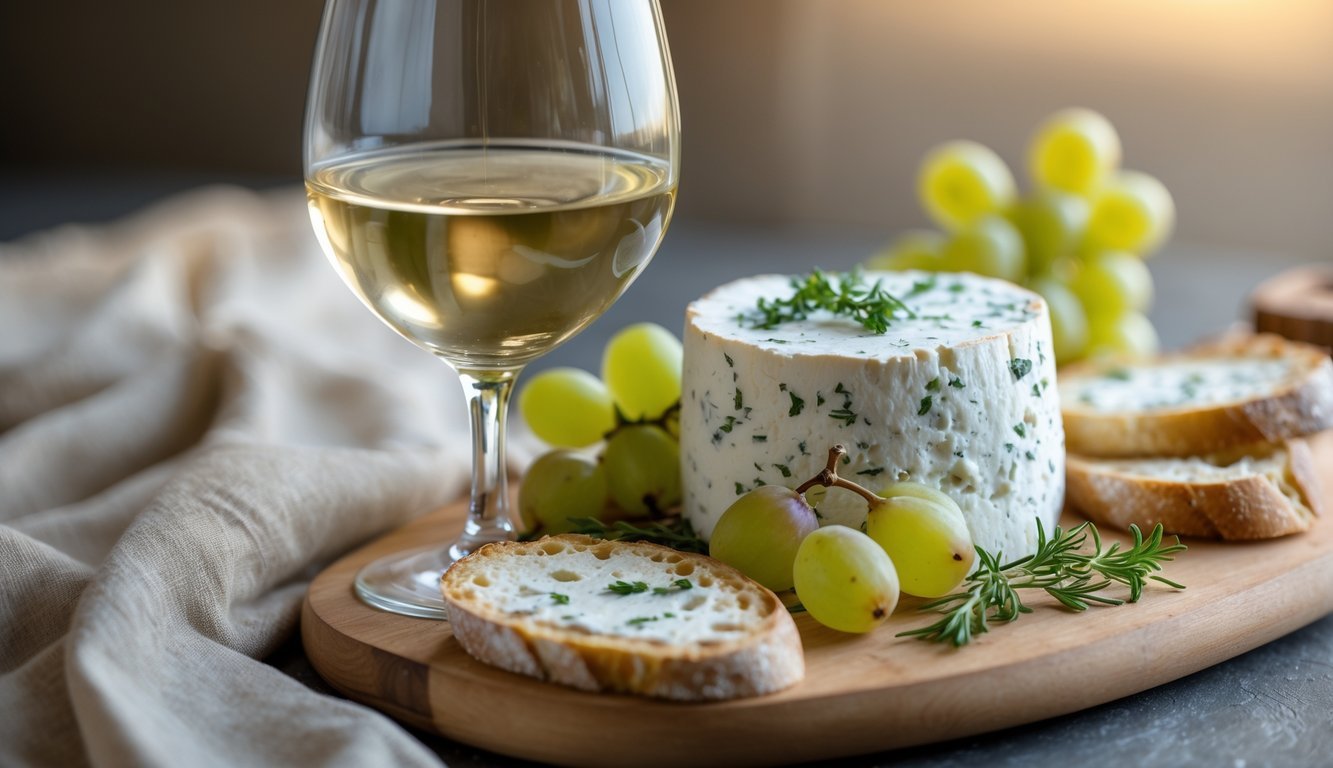
Sauvignon Blanc and goat cheese? That’s a combo that rarely fails. The wine’s bright acidity matches the tangy zip of the cheese perfectly.
Fresh citrus and green apple notes in the wine balance out goat cheese’s creamy texture. If you can, grab a Sauvignon Blanc from the Loire Valley for that classic grassy, herbal vibe.
This pairing feels extra fresh, whether you’re having it with a cheese board or tossing it with a salad. Next time you want something simple and tasty, reach for this duo.
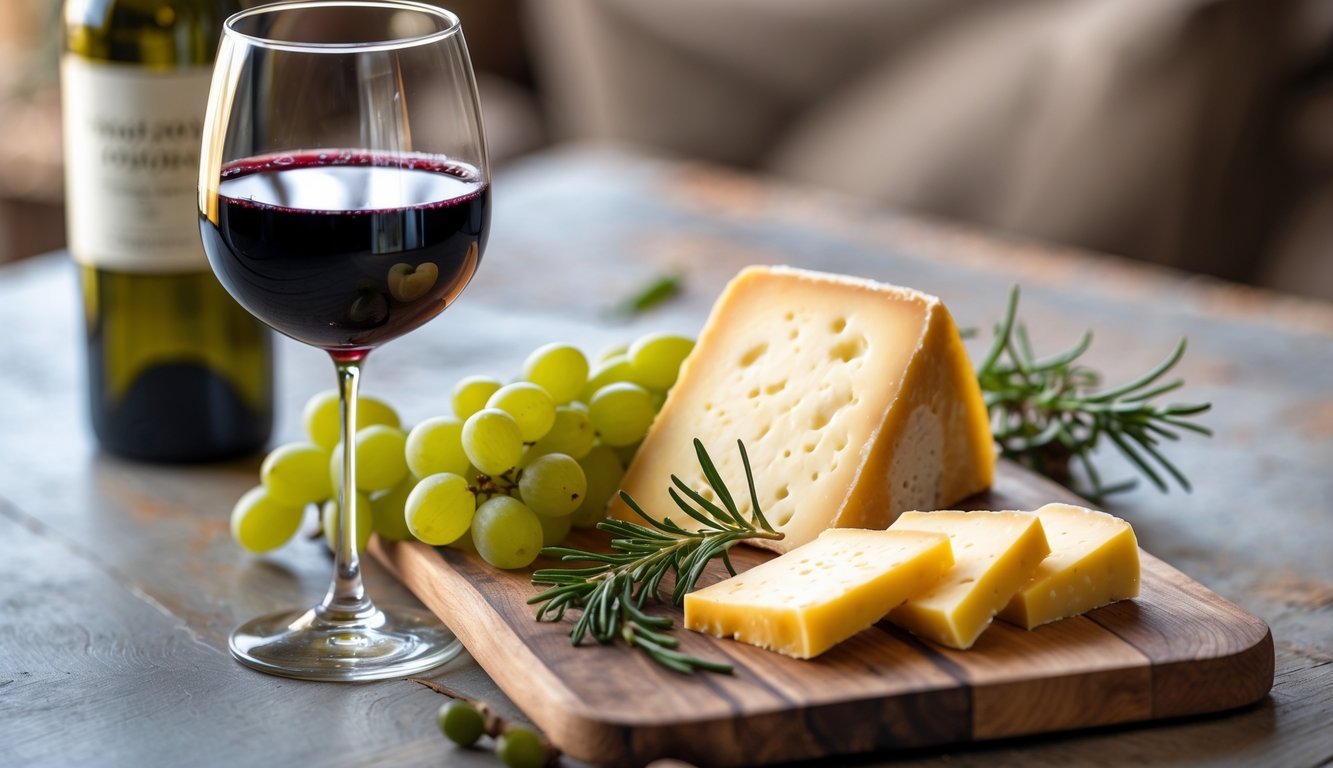
Pinot Noir and Gruyère make a fantastic pair. The wine’s light, fruity flavors really complement the nutty, rich taste of Gruyère.
Pinot Noir’s gentle tannins don’t overpower the cheese’s creaminess. Instead, they let both shine.
This combo is smooth but still full of flavor. It’s great for casual get-togethers or just a treat for yourself.

Chardonnay and Brie make a smooth, balanced match. The creamy Brie fits right in with the buttery, oaky notes of Chardonnay.
If your Chardonnay has crisp acidity, it’ll cut through the cheese’s richness and make everything taste brighter. Try this with a young, mild Brie or even an aged one.
The wine brings out the cheese’s flavor without stealing the show. It’s a simple, crowd-pleasing pairing for a night in or a gathering with friends.
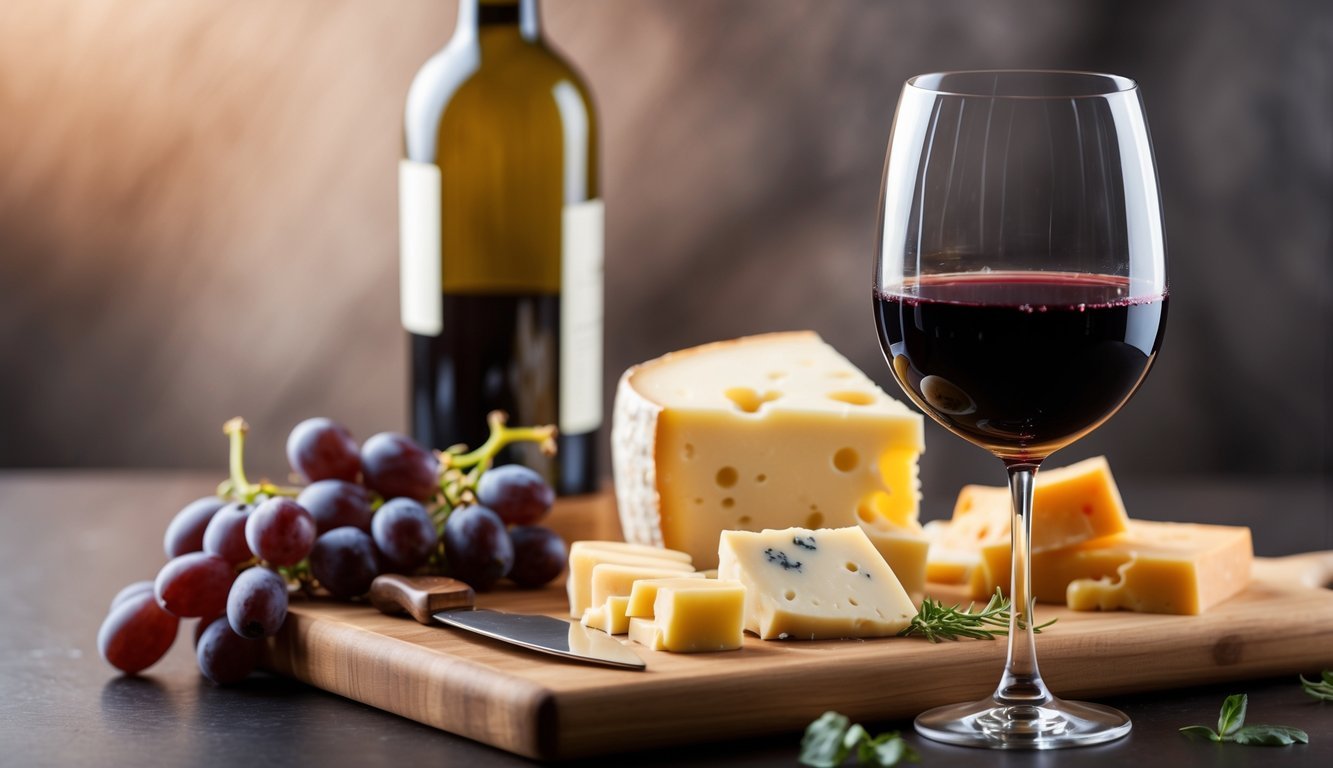
Merlot and Gouda go together so easily. The wine’s soft tannins and fruity notes blend with Gouda’s mild, nutty flavor.
Gouda’s creamy texture balances Merlot’s smooth body. If you have aged Gouda, its deeper flavors add a nice contrast to the wine’s softness.
This pairing is great for a cheese board or a simple snack. It’s a reliable choice, whether you’re new to wine and cheese or just want something that always works.
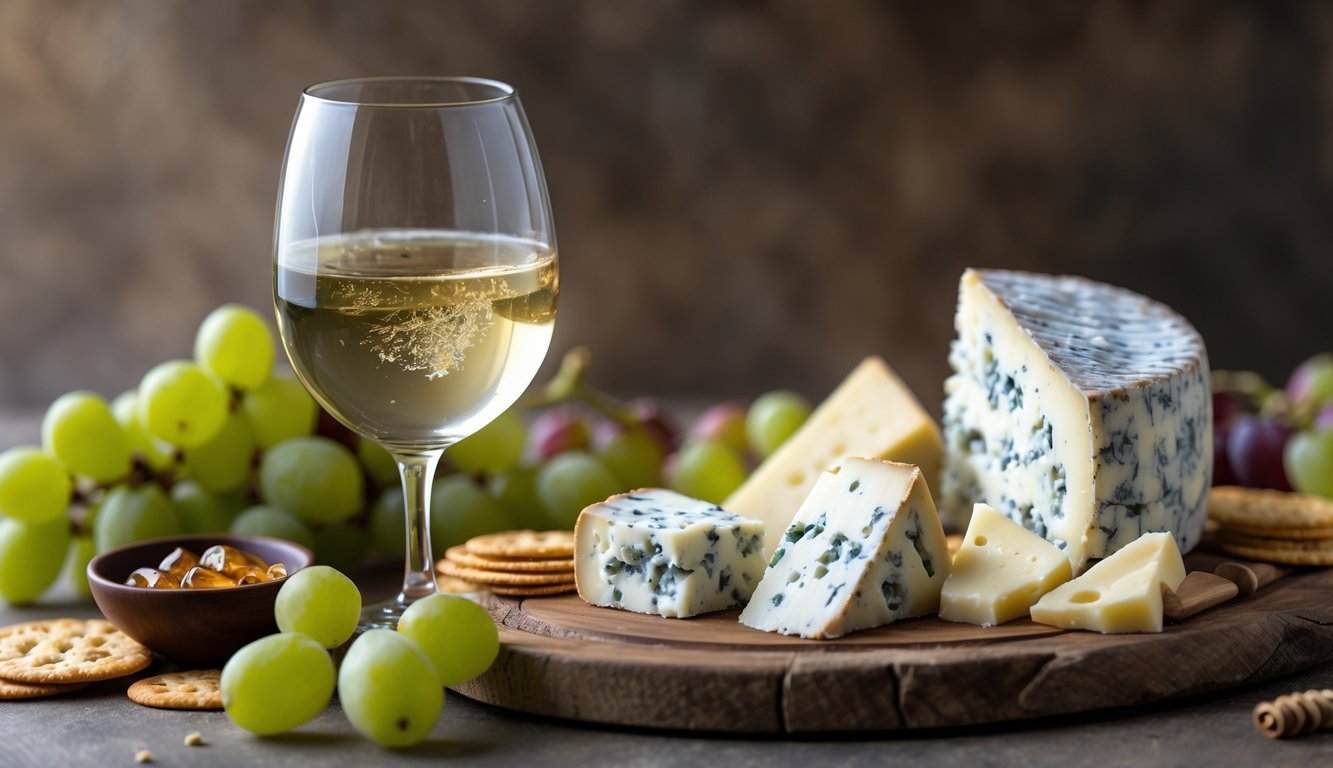
Blue cheese can feel a bit intimidating, but Riesling handles it like a champ. The wine’s sweetness and acidity balance out the tangy, salty flavors in blue cheese.
Try a German Riesling that’s not bone-dry. The touch of sweetness softens the cheese’s sharpness, and the fruity notes play off the intense flavors.
Serve blue cheese with fruit or crackers for an even better experience. This combo brings balance and makes the flavors pop.

Zinfandel and smoked mozzarella create a bold, smoky mix. The wine’s spicy, fruity notes match the creamy, smoky cheese.
Rich berry flavors in the wine balance the cheese’s smokiness. You’ll get a fun contrast between the wine’s sweetness and the cheese’s smoky edge.
If you’re feeling adventurous, try this pairing for a fresh twist. It works for quiet nights or when you have friends over.
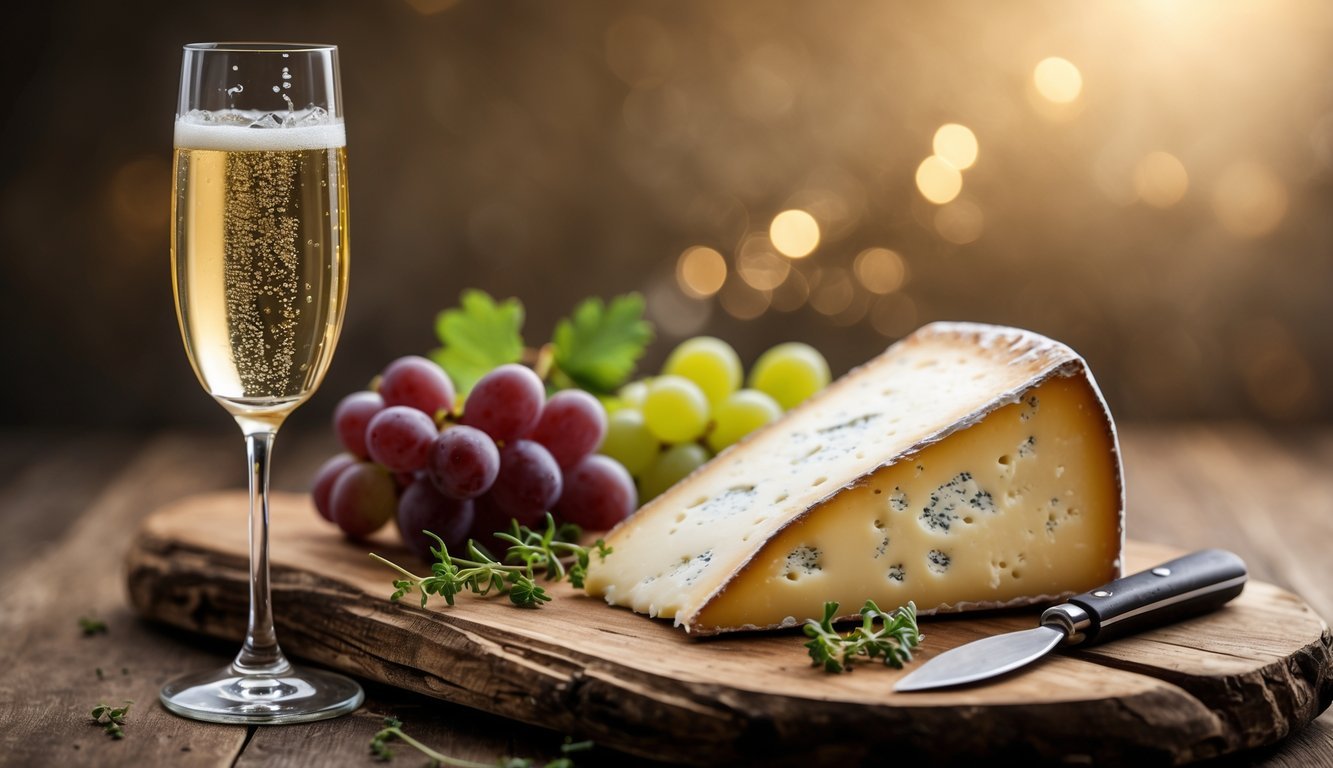
Champagne and Camembert make each other better. The bubbles and acidity in Champagne cut right through the cheese’s rich, creamy texture.
Champagne’s crispness highlights the subtle flavors in Camembert. The wine’s bright notes bring out the cheese’s milky, earthy tones.
This combo works for a simple snack or a fancy cheese board. It’s a classic, easy-to-remember pairing that feels a bit special.
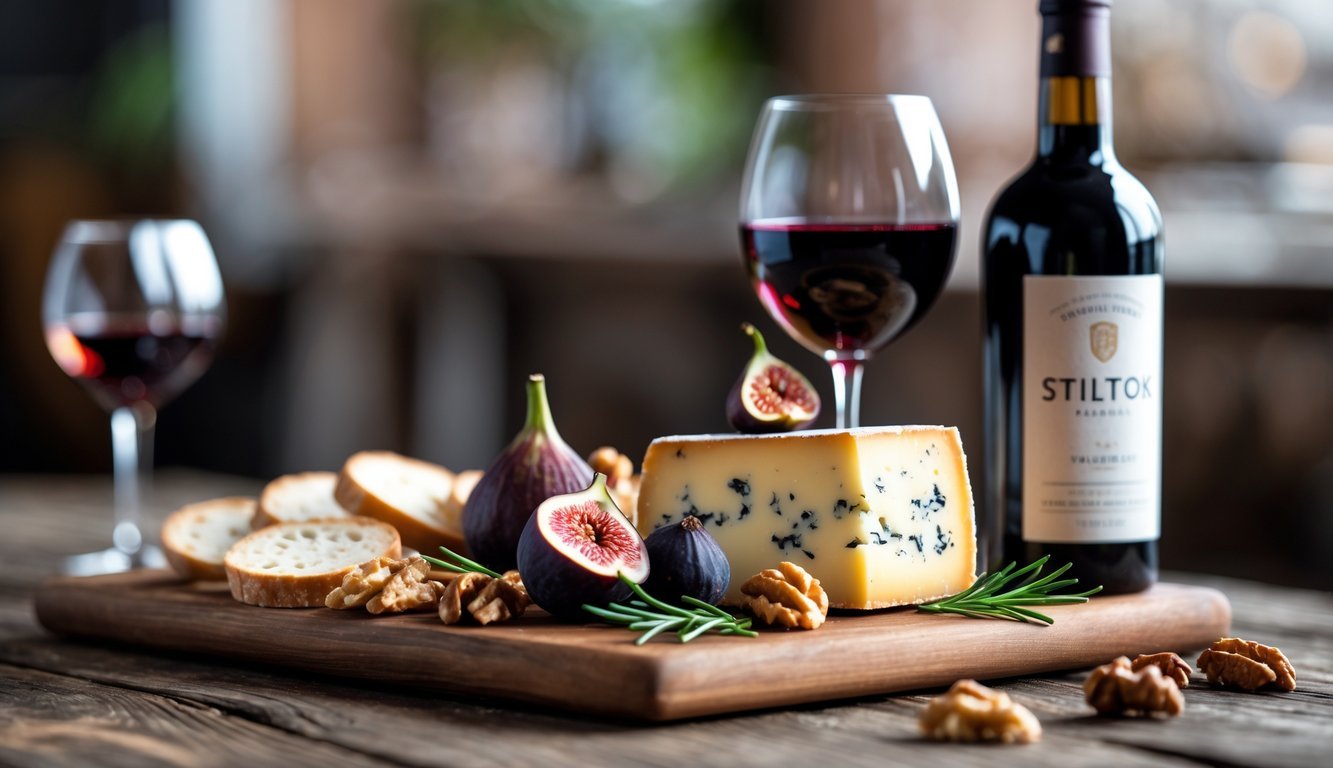
Port and Stilton are a match made in heaven. The rich sweetness of Port balances out the salty, creamy blue cheese.
Stilton has a crumbly texture and a strong taste, while Port’s high alcohol and fruity notes stand up to its boldness. The wine’s sweetness cuts through the cheese’s saltiness.
This classic combo feels perfect for a special snack or a party treat.

Malbec and Manchego make a tasty duo. Manchego, a semi-hard sheep’s milk cheese, brings a mild nutty flavor and a hint of sweetness.
Malbec’s bold, fruity notes match the cheese’s slightly sharp quality. The flavors balance, so neither overpowers the other.
This pairing is easy for snacks or appetizers and lets you explore something a little different.
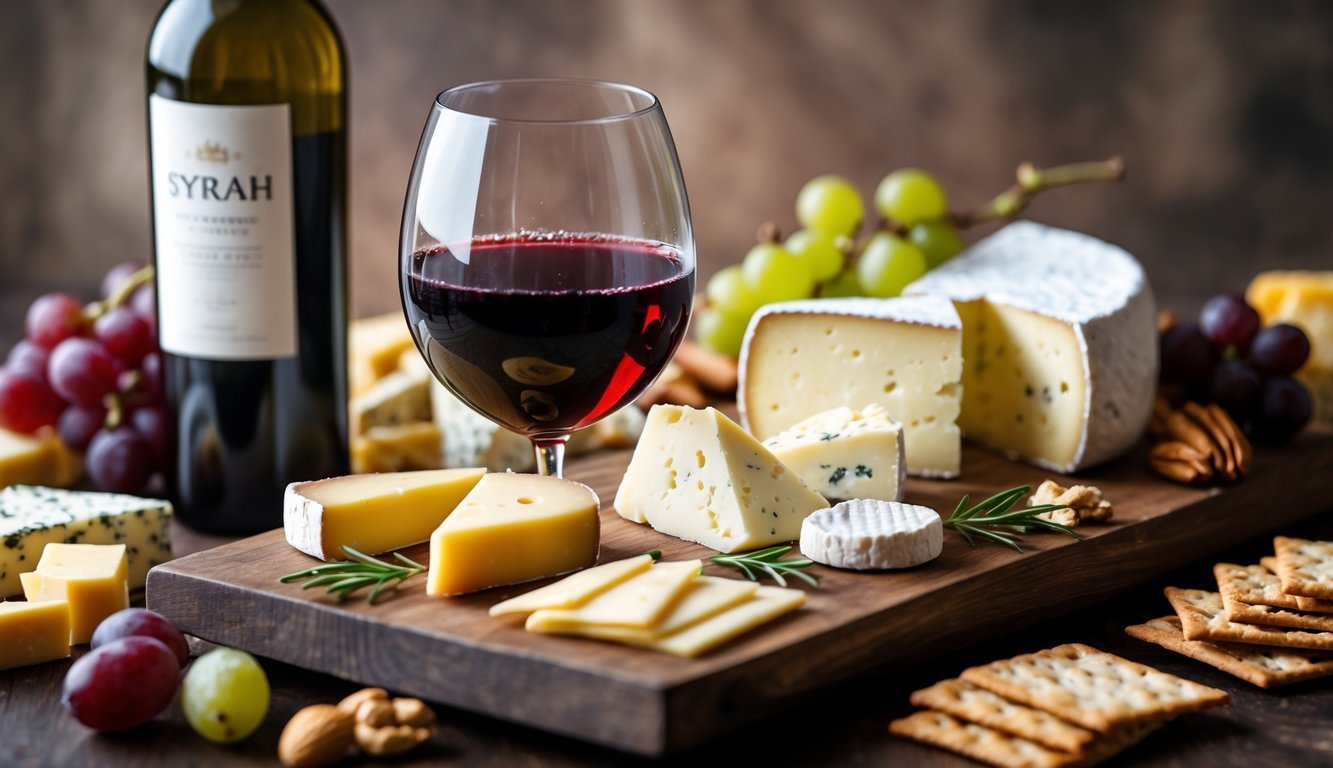
Syrah and Asiago work together for a rich, flavorful experience. Syrah’s full body and flavors of plum, black pepper, and leather go well with Asiago’s nutty, slightly sharp notes.
Asiago’s firmness stands up to strong wines like Syrah. The wine’s smoky hints blend with the cheese, adding depth.
Try aged Asiago for an even sharper bite—it’ll bring out the wine’s fruity and spicy side. This pairing is simple but always satisfying.
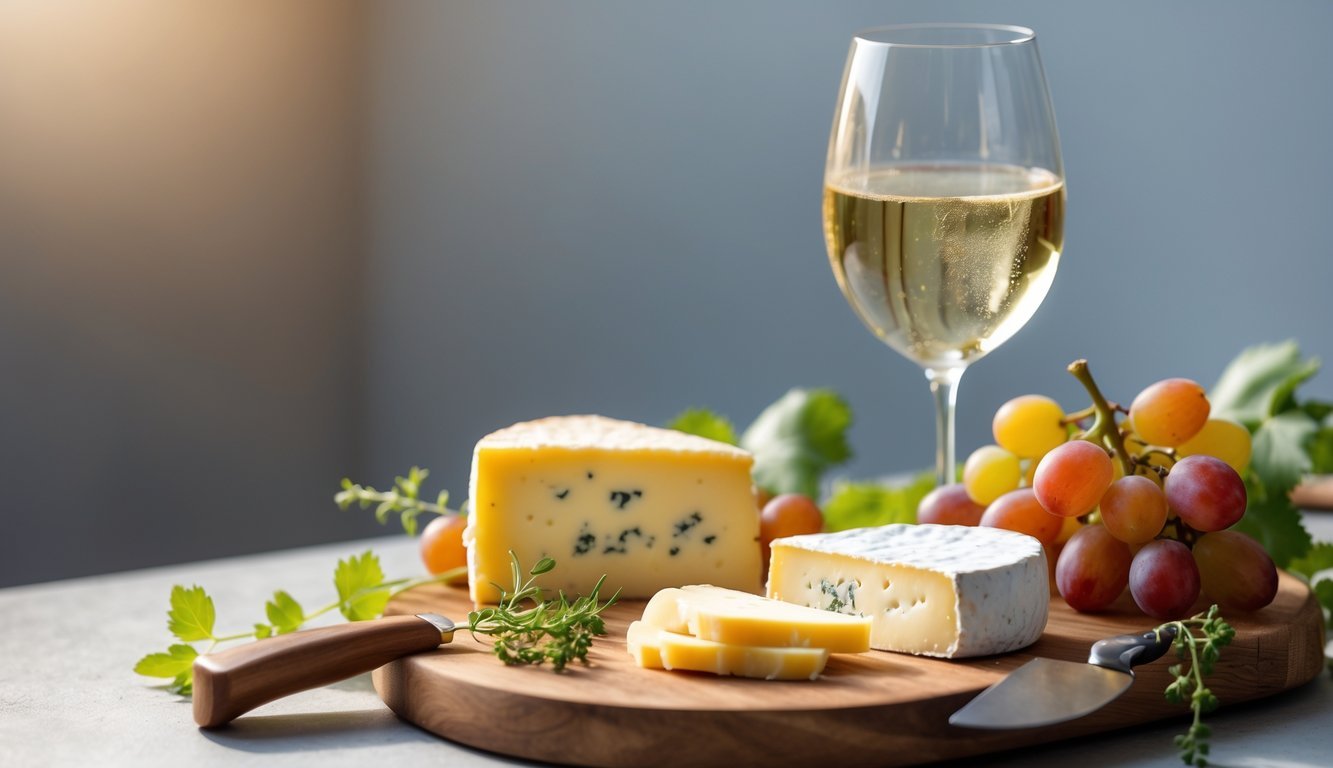
Gewürztraminer and Havarti balance each other out really well. Havarti’s creamy, mild taste fits perfectly with Gewürztraminer’s fruity, slightly sweet character.
The wine’s smooth, almost oily feel matches Havarti’s buttery richness. Every bite and sip feels extra smooth.
Serve the wine chilled and the cheese at room temperature. It’s a simple, tasty addition to any cheese platter.

Pairing wine and cheese isn’t just about sticking to tradition. It actually brings out the best in both and makes the whole tasting experience more memorable.
The right wine and cheese together balance each other’s flavors. Acidity in wine can cut through cheese’s creaminess, making each mouthful taste better.
Tannins in red wine soften when you have them with aged cheeses like cheddar. On the flip side, a crisp white wine can highlight the delicate flavors of a soft cheese like Brie.
Some combos bring out little hidden notes you’d probably miss if you had the wine or cheese solo. That kind of surprise keeps your palate interested.
Sharing wine and cheese just makes for good conversation and relaxed moments. Each pairing creates its own vibe and can make any gathering feel a bit more special.
You get to play around, find new favorites, and talk about what works or doesn’t. That makes hosting or just hanging out more fun.
You’ll also start to feel more confident picking pairings. Knowing why some work makes it easier to choose next time, whether you’re snacking or throwing a party.
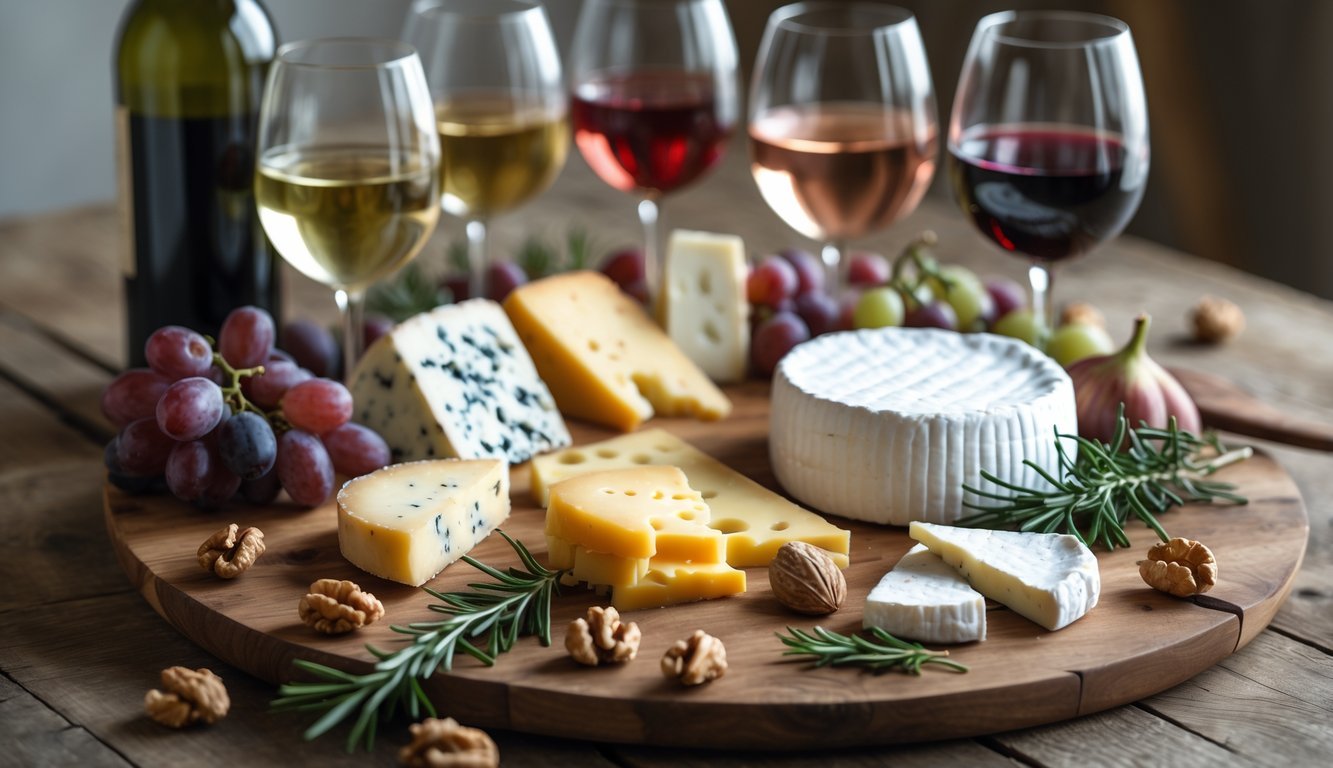
When you pair wine and cheese, focus on matching flavors and textures. Don’t pick options that overpower your wine, and don’t ignore how acidity and texture play together.
These little details can make or break your pairing.
Pick a cheese that’s too strong and, honestly, you’ll probably miss out on the wine’s flavor. A bold blue cheese, for example, can totally overwhelm a delicate white wine.
Suddenly, the wine just tastes kind of flat. Nobody wants that.
Try matching the intensity between your wine and cheese. Strong cheeses work best with full-bodied, rich wines—think Cabernet Sauvignon with aged cheddar.
If you’re sipping something lighter, go for a mild cheese like mozzarella or a young Brie.
Don’t let one flavor run the show. You want both the wine and cheese to shine, right?
Texture and acidity really shape how wine and cheese play together on your palate. Creamy cheeses, like Brie, pair up beautifully with smooth, buttery wines—those textures just seem to click.
Salty cheeses? They can slice right through the acidity in wine and somehow make everything taste brighter.
Acidity in wine matters because it actually cleanses your palate. A high-acid white wine, like Sauvignon Blanc, goes nicely with tangy, aged cheeses.
If you ignore these details, the pairing can just feel flat or too heavy. Paying attention to acidity and texture? That’s what brings a fresh, balanced feel to the whole experience.